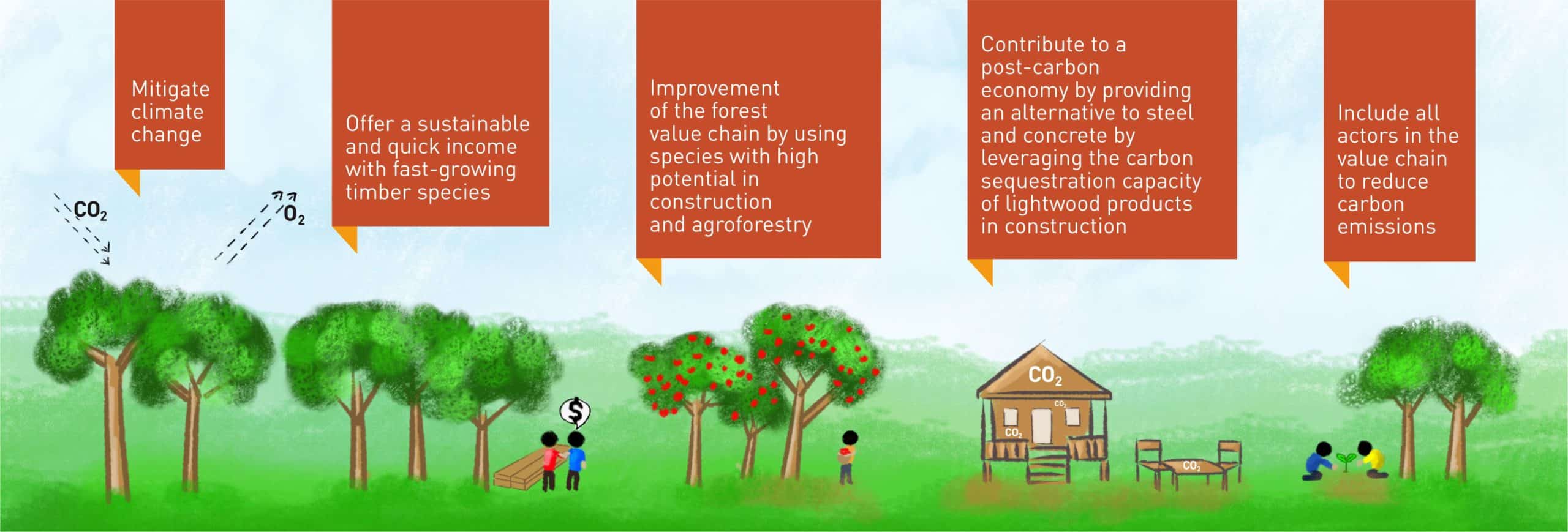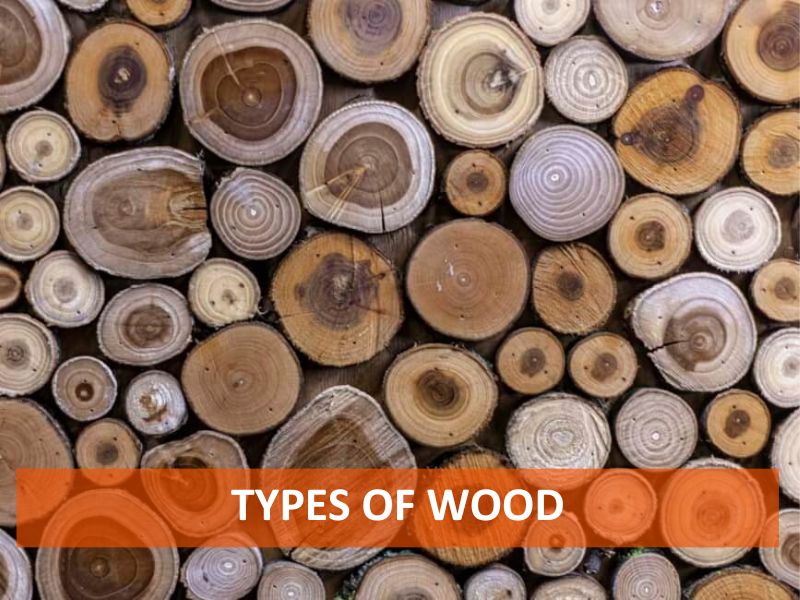
Wood is widely used in life, especially in the furniture field. Many types of wood are taken from natural forest trees, but only some people understand the unique characteristics of each wood species. Each wood species has different characteristics and their applications in interior design and construction are also different. Therefore, knowing all the necessary information about different kinds of wood will help you create the perfect product. In this article, VINAWOOD will highlight the main characteristics of many different types of wood, and show you some advantages and disadvantages of types of wood so you can choose the most suitable type for your project.
Main Types of Wood
Wood is divided into 3 main wood types, including:
- Hardwood trees are deciduous trees, have broad, flat leaves, and usually grow more slowly than softwood trees. In the tree trunk, there are water pipes. When observing a cross-section, you will see empty holes. It is these pores that form the grain and make the wood structure often denser.
Some hardwood commonly used to produce natural floors include oak, mahogany, cherry, walnut, ash…
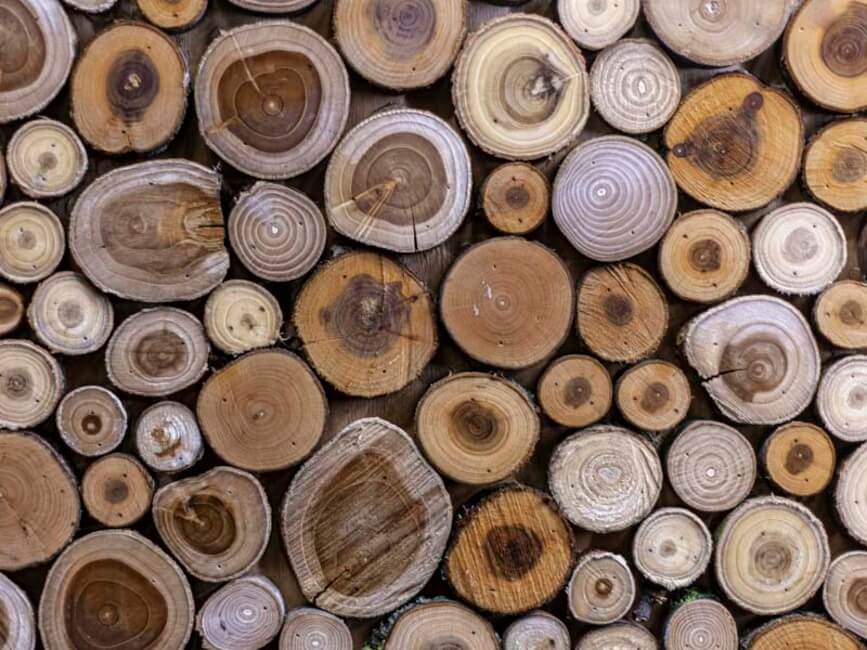
- Softwood trees do not have flowers or fruits and are usually coniferous trees such as pine, cedar, fir, spruce... Softwood trees do not have water vessels but are replaced by medullary rays, leading to the inability to see. voids when observed in cross-sections, so the grain of softwood is often few and not as beautiful as hardwood.
Softwood is usually coniferous trees such as pine, cedar, fir, spruce...
- Industrial wood is a combination of glue, chemicals, and lots of wood chips to create wood panels. Simply put, industrial wood is made from salvaged, recycled materials and branch tips of natural wood trees.
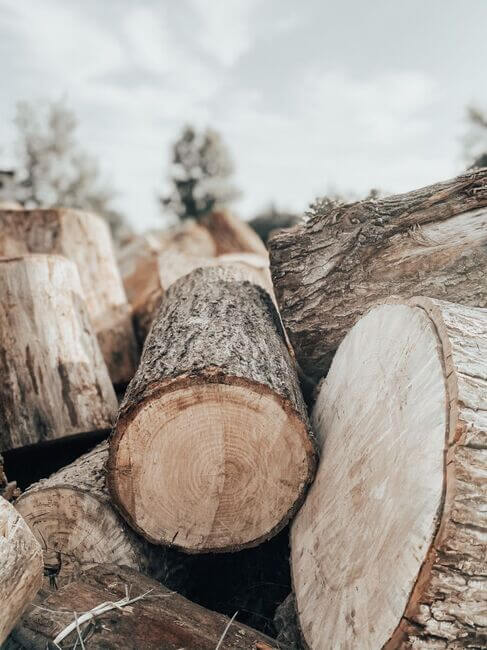
21 Types of Wood You Need To Know
Let VINAWOOD inform you the information about the 21 types of wood below
1. Acacia
Acacia is a typical type of hard types of wood. Acacia is commonly used for its beautiful color, it is usually light brown or dark mahogany and the heartwood of Acacia is reddish brown. Looking at the Acacia wood core, we will see that it has wavy patterns. The high resin content that makes it water resistant also makes it resistant to rot, odors, and stains. It also has antibacterial properties and is easy to clean. However, if you use Acacia to make outdoor items, you need to store and seal them properly. They are also the most difficult wood to work with because it is heavy and can crack or swell during production.
Advantage:
- Various colors, enhance the elegance of your space
- Environmentally friendly
- Durable, showing little wear and tear over time throughout use
- Good water resistance, limiting rot, odors, and stains
Disadvantage:
- The bearing capacity of Acacia wood is not highly appreciated compared to other types of wood
- The color and grain of this type of wood are often not outstanding, making the product design common and lacking uniqueness.
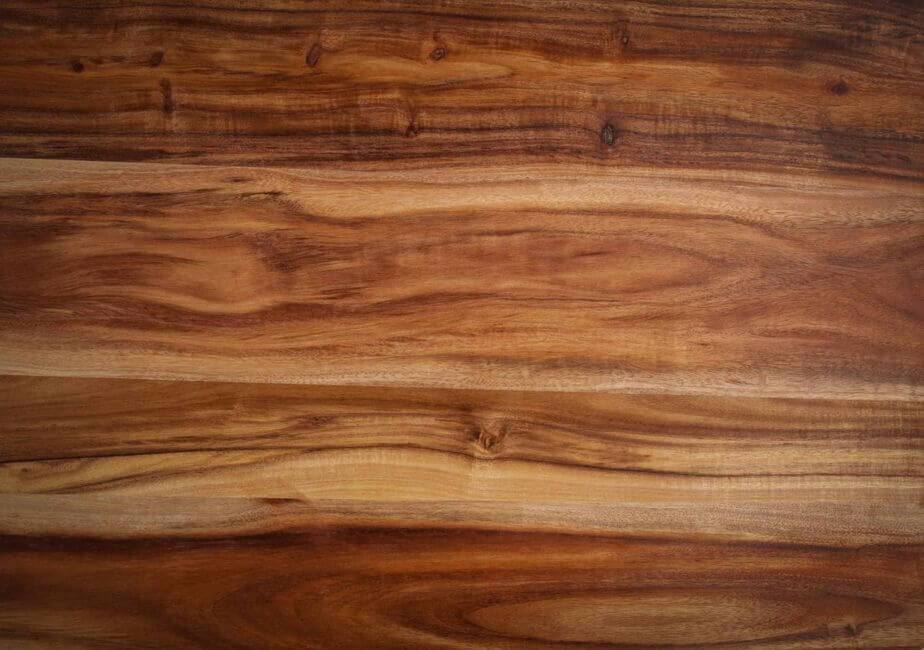
2. Birch
Birch is a hard species of wood that is used a lot and is quite economical. The most common Birch trees are White Birch, Yellow Birch, and Black Birch. Birch tends to be smooth and tightly grained, giving it a relatively uniform appearance. The wood is heavy, hard, and sturdy but responds very well to working with sharp tools. Wood withstands glue well when glued carefully, and is especially easy to stain and polish. Nail and screw adhesion is quite good if drilled before driving nails and screws. Wood dries relatively slowly, and degrades little during drying, but has quite a large shrinkage, so it easily changes shape when dry.
Advantage:
- The wood grain is straight and beautiful
- The wooden surface is quite uniform and has a high aesthetic value
- They have good resistance to pests and termites
- They can easily bend the material into many different shapes because this type of wood is highly elastic and has quite a large shrinkage rate.
- Birch’s price is cheap
- They are lightweight, convenient for moving
Disadvantage:
- Birch will not be very durable
- The heartwood of birch is quite soft, so it is easily attacked by pests, so termite resistance is poor if the wood is not carefully treated and dried to prevent termites.
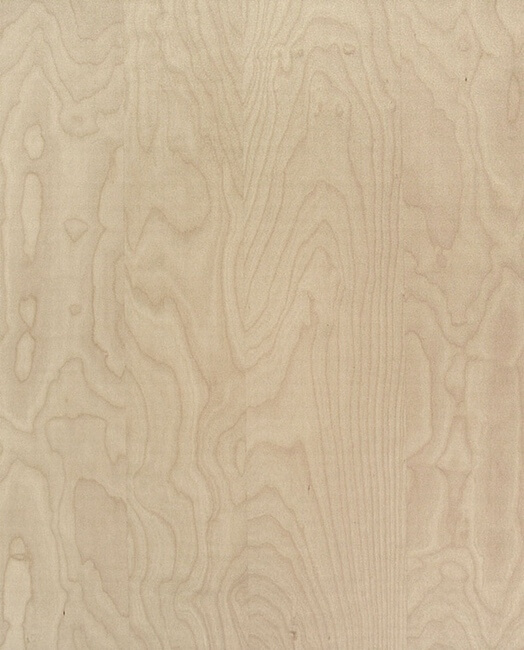
3. Cedar
Cedar is a soft, fragrant wood that is resistant to insects and rot. Cedar wood also has high aesthetics and sharpness that is widely loved around the world. It is highly durable and lightweight, it is structurally stable and less susceptible to shrinkage, warping, and cracking. The stability of wood is maintained in both wet conditions and contact with soil, so it is commonly used in the production of interior or exterior furniture.
Advantage:
- Cedar contains essential oil, so the strong aroma brings a pleasant and comfortable feeling
- Cedar is very resistant to rot, has excellent water resistance, and is not attacked by insects, termites, or mold.
- Non-electrical conductivity, and good mechanical strength.
- The wood grain is soft so it is light in weight, and has good formability
Disadvantage:
- Cedar is sensitive to moisture, so it can easily warp
- Cedar tends to darken or change over time so it will have inconsistent colors
- Cedar has a higher price than regular wood
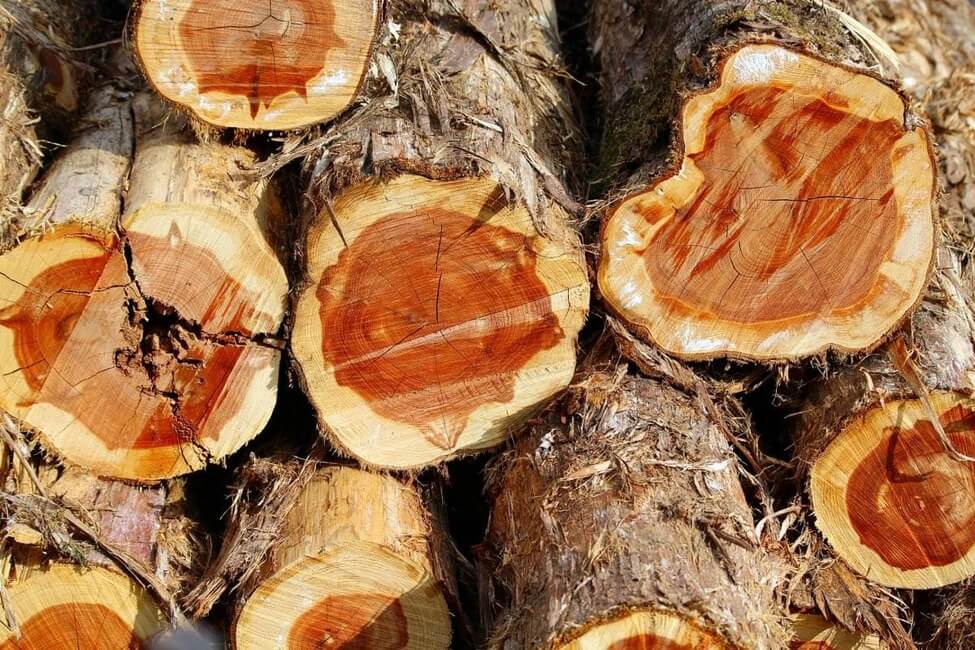
4. Oak
Oak is a hardwood used a lot in America. These wood types are hard and dense. There are two common types of oak wood: white and red. It is coarsely textured, straight-grained, relatively rich, and has an attractive, open grain that looks beautiful, making it ideal for flooring or cabinetry.
Advantage:
- Oak has a wavy pattern that looks very beautiful
- It has high strength and good ductility
- It has good resistance to moisture and abrasion.
Disadvantage:
- Oakwood dries slowly and tends to crack and warp when dried.
- Oakwood is very heavy, causing obstacles in the production process
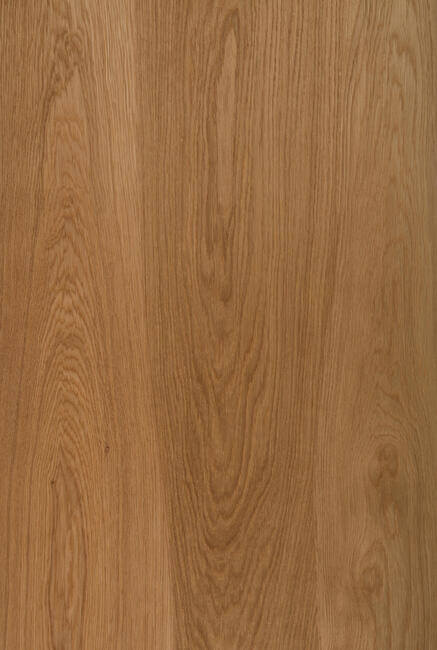
5. Pine
Pine is a soft types of wood that is easy to manufacture. It varies in color from golden brown to cream tones. Pine may be susceptible to rot, but its core is less dense and very versatile in production. Pine is ideal for woodworking, rustic furniture, flooring, or shelving because of its high moisture resistance
Advantage:
- Pine wood is light so it is very convenient to move when making furniture.
- Pine's price is cheap, available raw materials, so intermediate costs can be saved
- The heartwood is naturally resistant to decay, so it is highly durable and can last up to 20 years
Disadvantage
- Because it is a soft wood, Pine is easily scratched and dented.
- It is not as durable as hardwood, and may not be suitable for high-use areas.
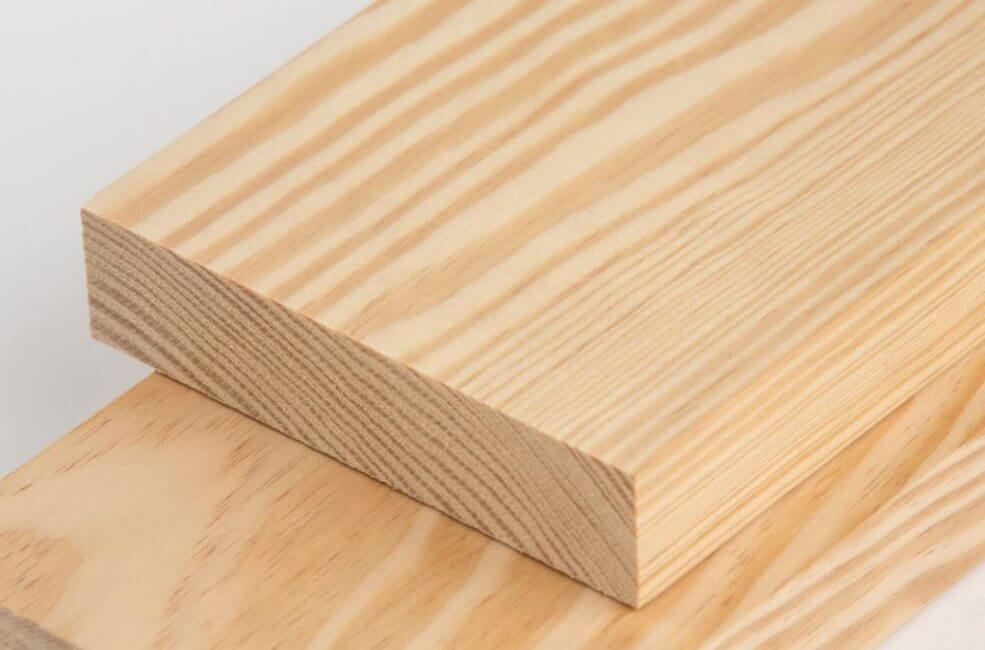
6. Mahogany
Mahogany is a luxury hardwood commonly found in Central and South America, West Africa and the West Indies. It has a dark reddish brown or dark red color, fine and tight grains. Resistant to insects and rot, it is also a very stable wood, plus it resists warping, swelling or shrinking.
Advantage:
- Mahogany has a very delicate and luxurious color
- Wood has very high stability, and does not warp, swell, or shrink
- Mahogany has excellent abrasion resistance, suitable for many applications.
Disadvantage:
- Mahogany has a higher price than other types of wood
- Because of its weight, Mahogany can be difficult to handle
- Genuine mahogany can be scarce, so sourcing legally and sustainably is vital.
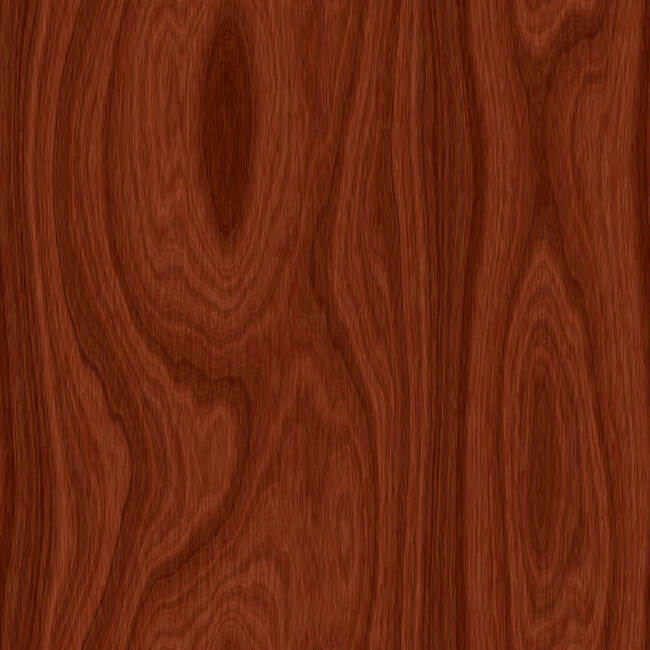
7. Maple
Maple has very tough properties and a very dense core. It has straight, tight fibers and a light-colored outer skin. Maple has a wavy pattern. The wood's dense heaviness, combined with its moisture-resistant properties, make it ideal for high-use items. There are different kinds of wood but the most commonly used is hard maple, also known as sugar maple or rock maple.
Advantage:
- Maple is very sturdy
- Maple's color is very harmonious, with uniform veins that are highly aesthetic
- Good stability, no warping or twisting
- Maple is versatile and suitable for many applications
Disadvantage:
- Maple is very difficult to evenly color while dyeing
- This is high-quality maple wood so the price is very expensive
- Maple is very heavy, making production difficult
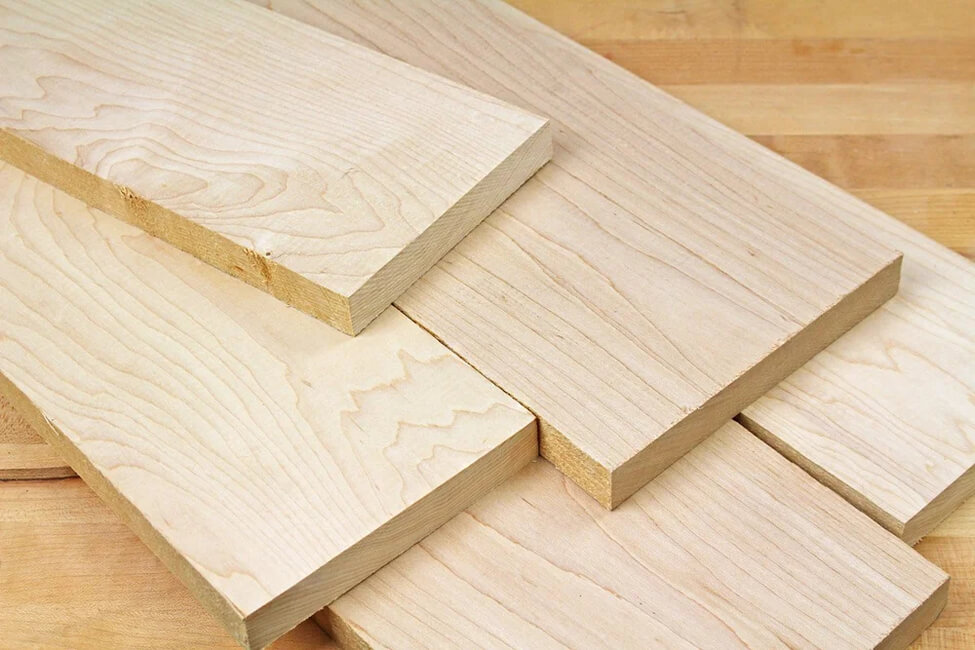
8. Teak
Teak is a long-lasting wood and is considered the "king of wood" because of its flexibility and durability. Teak is a straight-grained wood with a rough and uneven texture. Teak has excellent resistance to termites and rot. It can also withstand high temperatures and does not catch fire easily. The finished wood looks beautiful, with golden brown heartwood and yellow/gray sapwood.
Advantage:
- Teak wood is very durable, has good moisture resistance, and limits insect damage
- Teak is famous for its durability
Disadvantage:
- Teak wood has natural oils, so the processing process will be difficult
- Unsustainable harvesting of Teak wood can affect the ecosystem
- It's high cost
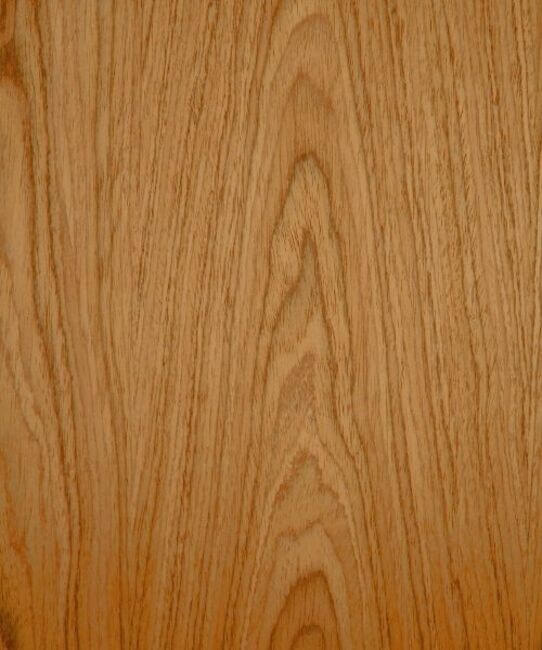
9. Spruce
Spruce wood is considered the ideal wood for producing musical instruments. With smooth and straight grain, Spruce wood also has quality sound.
Advantage:
- Spruce wood has a good price
- Spruce wood is durable
- It has resonance so it is often used in musical instruments due to its tonal qualities.
Disadvantage:
- Spruce is a soft wood, it is easily scratched and dented
- It is not as durable as many hardwoods.
- Spruce may warp or rot if exposed to moisture.
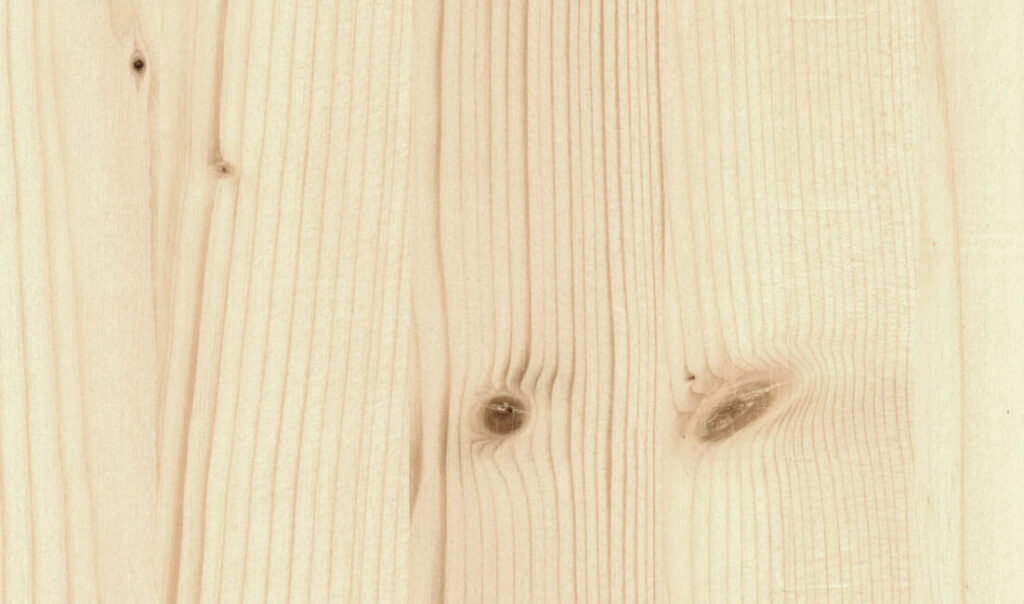
10. Cherry
Cherry is one of the most popular types of wood today. Cherry wood is creamy white to red to reddish brown and darkens as it ages. The tight, straight grain gives the wood a very uniform appearance. When stained, cherry wood produces one of the smoothest finishes available, giving it a very high-end appearance.
Advantage:
- Cherry wood is smooth and glossy
- This type of wood is highly durable and hard so it is easy to shape
- The color of Cherry wood is beautiful and highly aesthetic
Disadvantage:
- Cherry wood is often more expensive than other hardwoods.
- When exposed to sunlight, wood will change color
- It is sensitive to moisture and can warp at any time
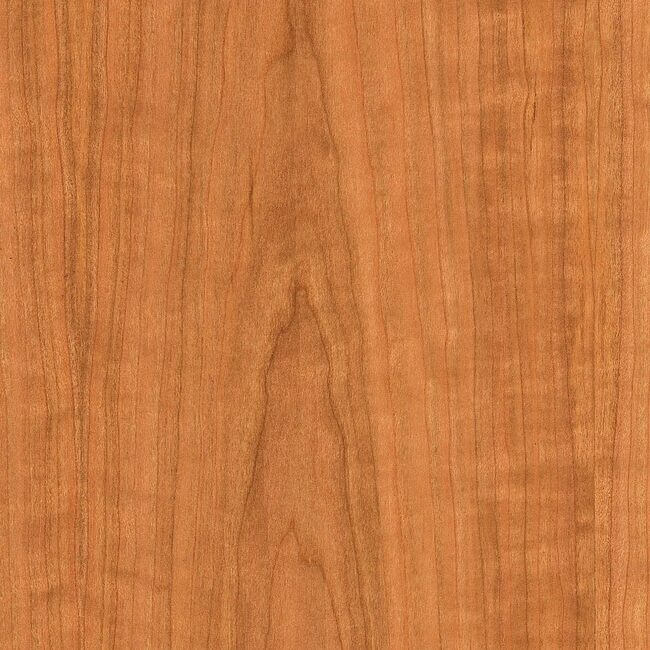
11. Ash
Ash has a light color, this type of wood comes from many different types of trees such as green ash, white ash, and black ash. Ashwood is a light but durable hardwood. It is easily stained or painted. This type of wood is also more shock-resistant than other types. With a similar shade to maple, ash wood is light in color. This moderately priced wood is ideal for bending, making it perfect for curved furniture.
Advantage:
- Ashwood is highly aesthetic with eye-catching colors
- This type of wood is cheaper than other types of hardwood
Disadvantage:
- It has less hardness than other hardwoods
- Ash is susceptible to insect and pest attacks
- Ash is less water resistant than other types
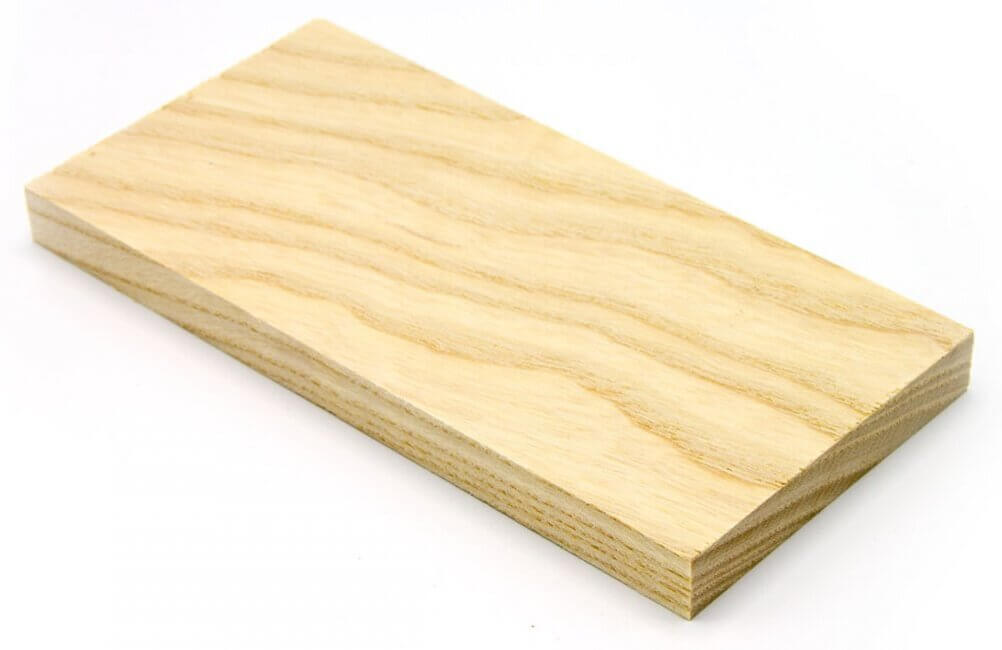
12. Walnut
Wood from the Walnut tree has a deep chocolate color and is loved by woodworking experts. This type of wood has straight grain and irregular ripples. It is famous for its durability and the variety of colors that can occur in its straight grain. Although mainly dark brown, lighter colors may be present and the seeds may contain purple streaks. Walnuts are extremely resistant to rot but are not resistant to insects.
Advantage:
- Walnuts have an elegant color
- The stability of wood is high, less likely to warp or inflate
- Walnut has a high-gloss
Disadvantage:
- Walnuts' price is high
- The color is dark so it may be limited for some designs
- The wood is not too hard like some regular hardwoods
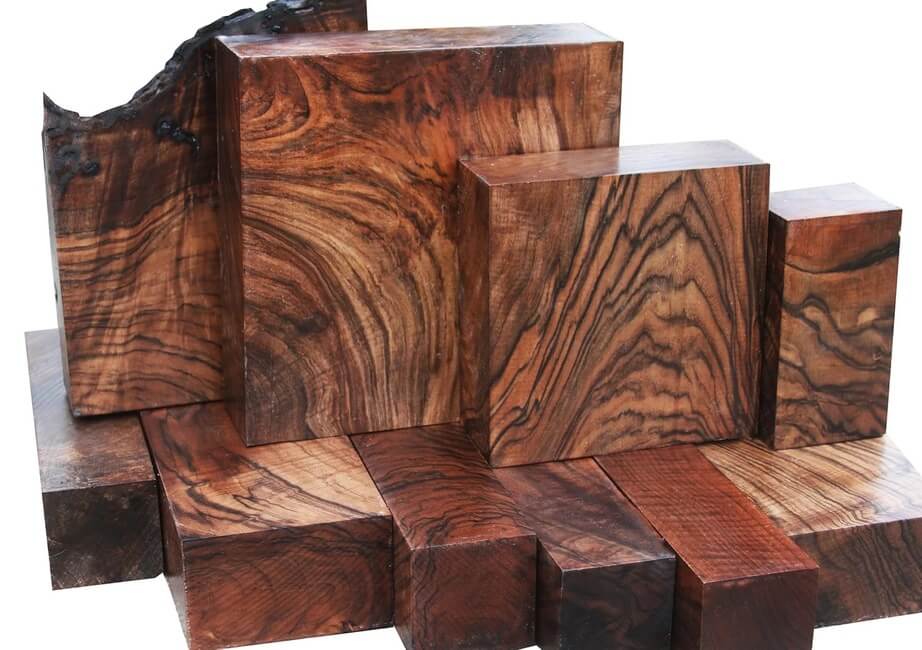
13. Fir
Fir is a highly durable softwood. Douglas Fir can repel insects. Douglas Fir has a very clear and straight grain. The wood has a reddish-brown color and is unable to accept stains evenly. Because of its style and grain density (it is a heavy wood), Douglas is easy to manufacture. With its affordable price and durability, Douglas Fir is a great choice for many homes.
Advantage:
- It can help to save money because of the cheap price
- Fir is used to create many different applications
- Fir is well suited for many applications.
Disadvantage:
- Fir wood can be easily eroded and is not very durable
- It may be affected by high humidity
- Because it lacks rich colors and shapes, Fir is aesthetically limited
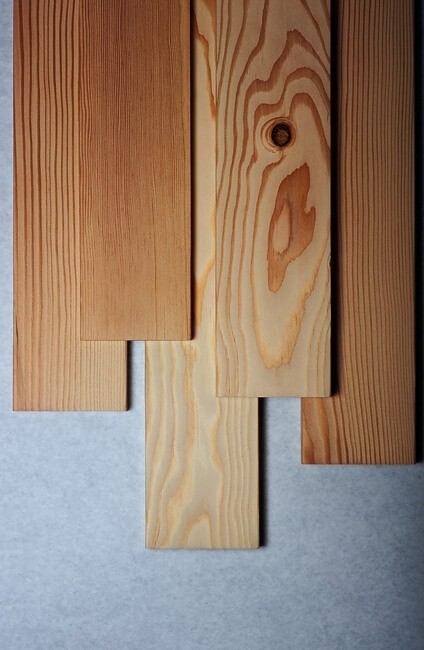
14. Ebony
Ebony stands out because the wood color is almost black. It is very popular in specialty woodworking applications. This is a rare type of wood, strictly protected according to international regulations.
Advantage:
- These types of wood are extremely hard so they can handle complex carving operations
- Because of the classic dark color, Ebony looks so classic
- It has high gloss and a stable size
Disadvantage:
- This type is one of the most expensive woods on the market.
- It has a high brittleness, causing difficulties in the production process
- This is a rare type of wood so it is difficult to source
- Strictly protected: Some species are in danger of extinction; The source of supply must be verified as sustainable.
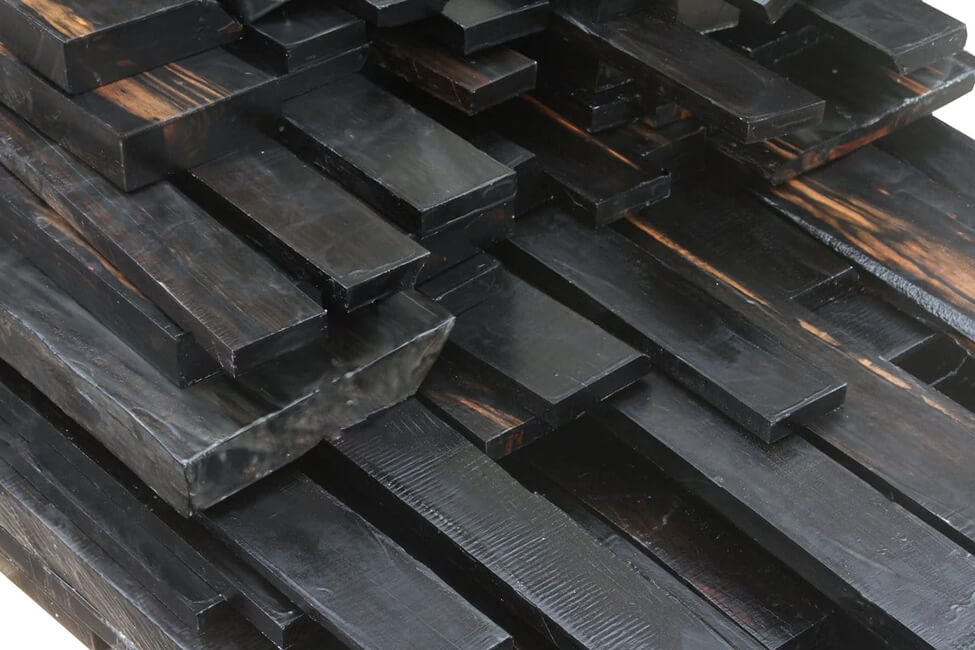
15. Bamboo
Bamboo has a very thick texture so it is highly durable and hard. It is often used to produce high-end furniture, cabinets or wooden floors. Bamboo can also be an ideal fencing material.
Advantage:
- This type of wood grows quickly and sustainably, so it is very environmentally friendly.
- Bamboo is known as its high durability and toughness
- Bamboo is said to be a highly aesthetic and unique material
- It has good water resistance
Disadvantages:
- When in a humid environment, bamboo warps or cracks
- Bamboo is not very durable and is easily scratched
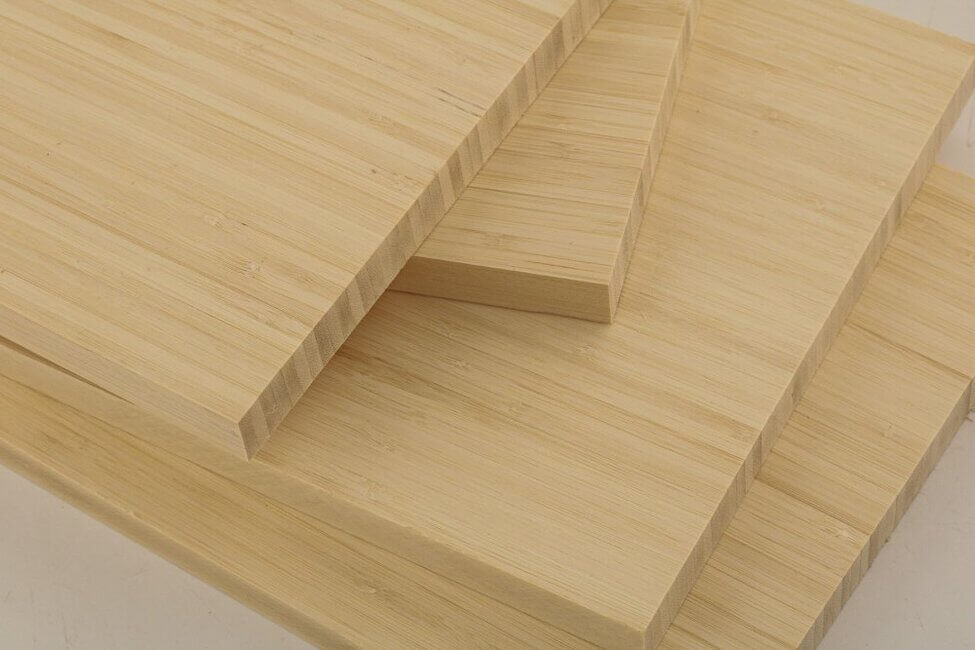
16. Beech
Beech is popular because it is extremely sturdy and highly resistant to shock. However, this type of wood is not very durable. Beech absorbs moisture well so it is easily damaged by insects. Beech can hold paint well so it is often used to make veneers.
Advantage:
- Oak is an odorless wood so a finished product will not overpower the scent of the room.
- Beech has a smooth texture that makes it easy to finish and polish
- This type of wood is usually cheap
- Beech has a certain hardness
Disadvantage:
- Beech is said to be difficult to craft by hand because it is hard
- It is susceptible to warping or blistering when exposed to excessive humidity
- Beech's durability is very limited so it is not ideal for outdoor use.
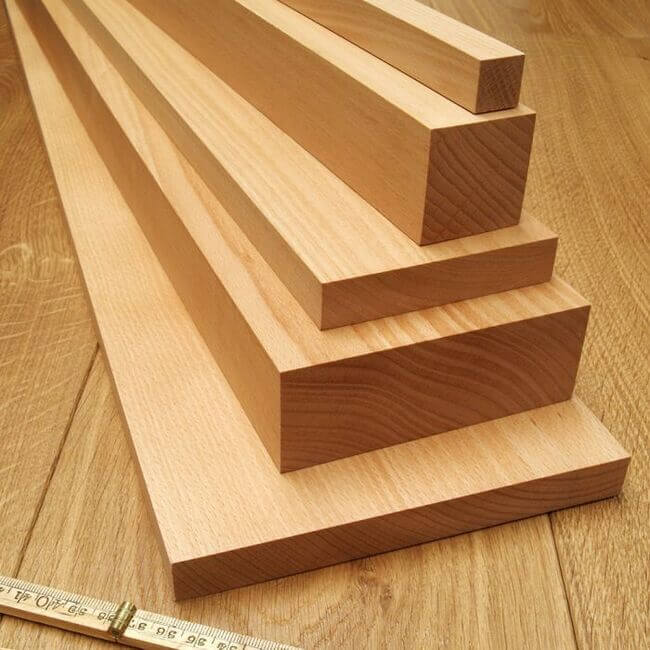
17. Poplar
Poplar has perfect multi-purpose usability. It is light in color and has an even texture. The grain of poplar is straight, and it is also a softer hardwood so it is easy to work with hand or power tools. However, this type of wood tends to leave dull edges so it needs to be smoothed with sandpaper
Advantage:
- This type of wood is light so it is easy to move
- It can absorb paint well and is very versatile
- This is a sustainable wood
- It is sually one of the cheapest hardwoods.
Disadvantages:
- Poplar is soft so it can easily be scratched and dented
- This type of wood does not have good durability and is not as resistant to rot and insects as other types of wood.
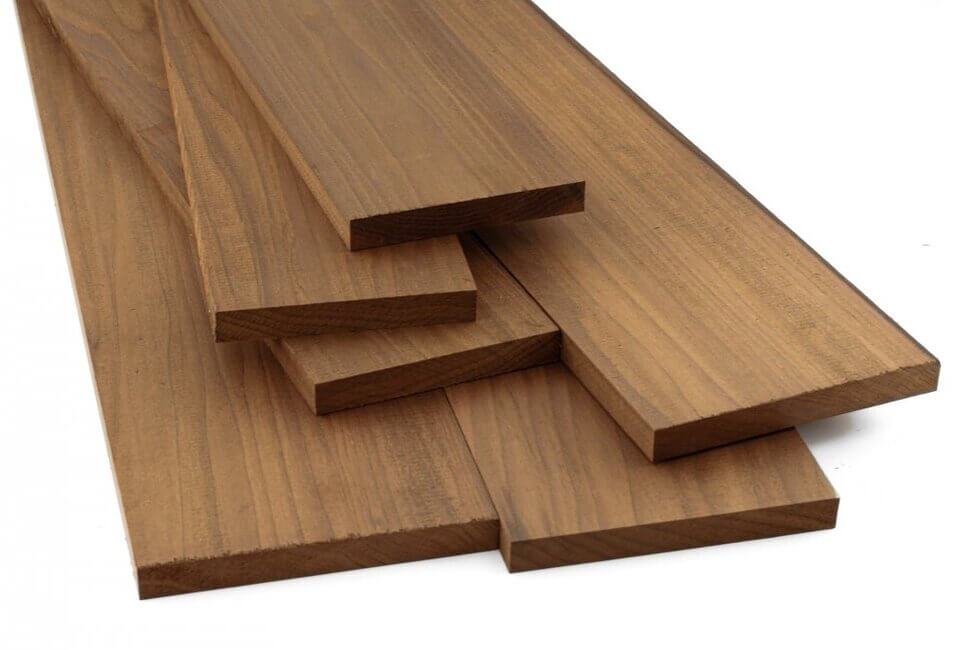
18. Redwood
Redwood is one of the tallest trees in the world. This is a light and soft wood, very easy to produce. As its name suggests, Redwood ranges in color from yellow or light white to reddish brown or dark red. This type of wood has a rough texture and very tight grain. It is very resistant to rot and insects, making it ideal for decks and other outdoor projects.
Advantage:
It is highly resistant to pests and moisture
Redwood is highly aesthetic
This type of wood is superior to regular wood so it is easier to handle
Disadvantage:
Redwood's high price is more expensive than other types
Redwood is susceptible to dents, scratches and breaks
It may change color over time
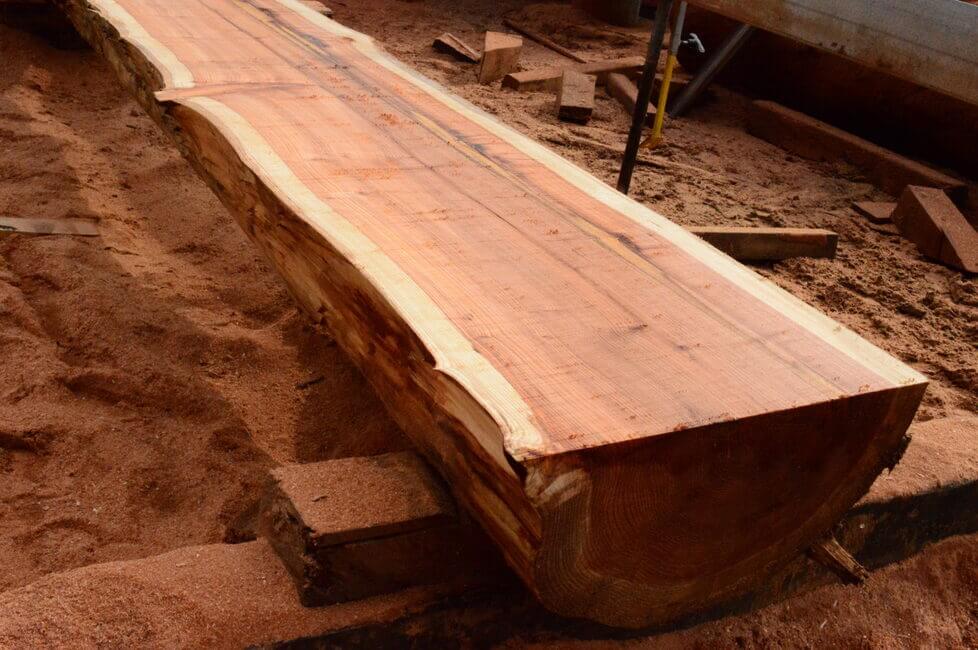
19. Pressure Treated
Pressure Treated is wood that has been pressure treated. This type of wood is made from southern yellow pine trees, it has good rot resistance and insect resistance. To create this type of wood, factories will cut the wood to size and impregnate it with water-based chemicals under pressure. This is a treatment method to help make wood more durable and limit rot. This wood has a lifespan of up to 40 years.
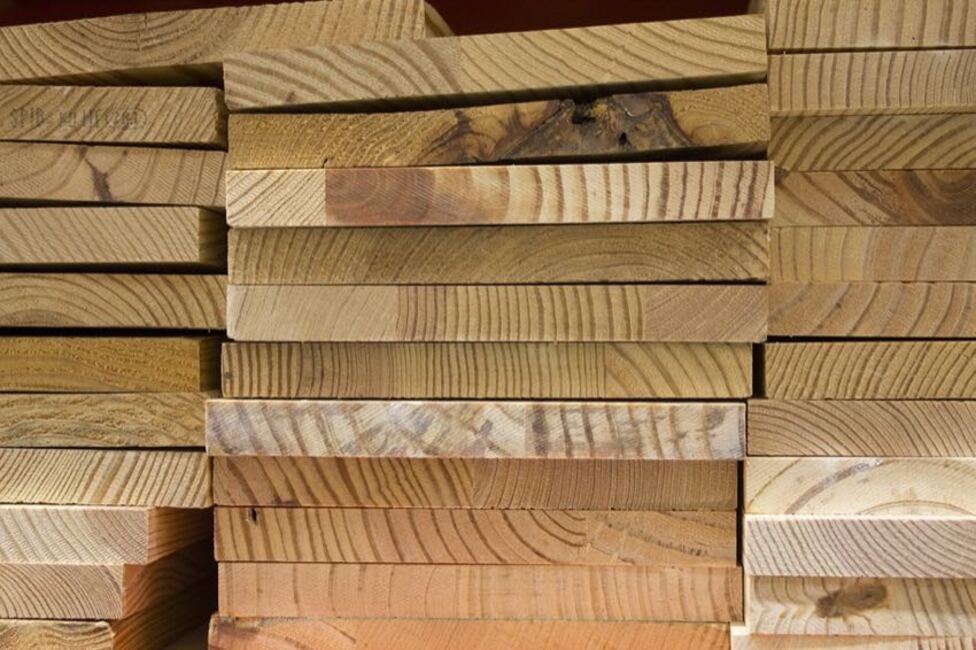
20. FSC-certified lumber
FSC stands for Forest Stewardship Council - a non-profit organization that evaluates forestry industry products. FSC-certified lumber is the same as pressure-treated lumber. FSC certifies lumber production in a variety of species, including softwoods and hardwoods. Prices for FSC-certified lumber may be slightly higher than standard lumber, but FSC Certification may be a must for those looking for responsibly produced lumber.
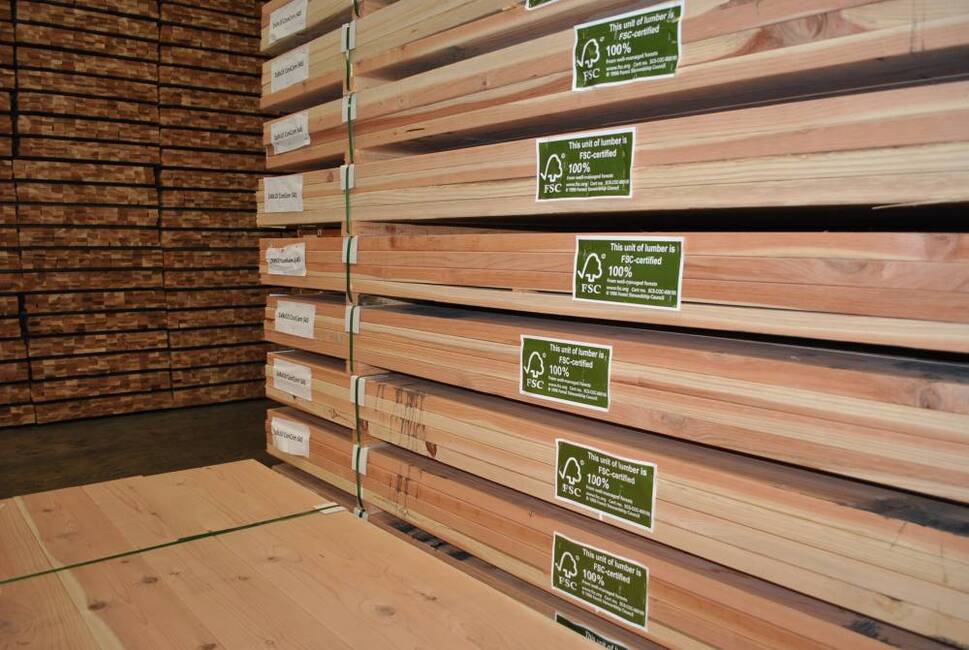
Comparing Hard Wood Types vs Soft Wood Types
| Hard Wood Types | Soft Wood Types | |
| Advantages | The structure of wood is dense and complex, so it often has high hardness and durability.
Different types of hardwoods all stand out aesthetically with natural wood grains and vibrant colors |
Because of its fast growth rate, softwood is present everywhere. Therefore, products made from softwood have more reasonable prices.
The applications of softwood are very flexible and diverse. Softwood is easy to produce and widely used. |
| Disadvantages | Hardwood grows more slowly and needs to be "old enough" to be exploited for use, so the waiting time from planting to exploitation is quite long. This leads to hardwood products on the market often having quite high prices.
The application of hardwood is not versatile and widespread. In the interior, hardwood is often used to make natural wood floors. |
The durability is lower than hardwood, but still enough to meet common needs.
The color and grain of softwood is not as beautiful as hardwood. |
Hopefully through the above article, you have been able to grasp information about different kinds of wood. Please visit VINAWWOOD's website if you want to know more about all types of plywood.


